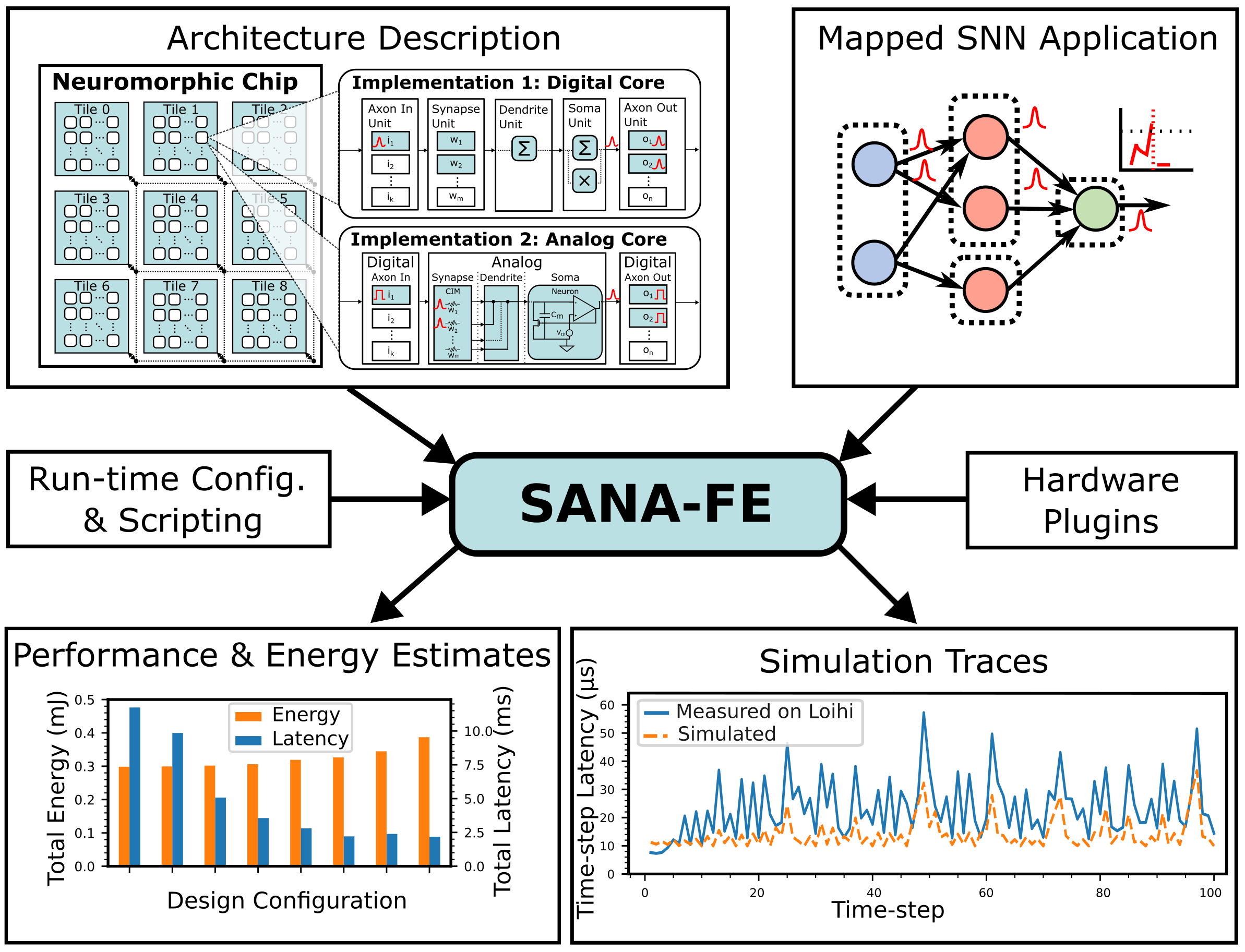Neuromorphic Computing System Co-Design
Project Overview

With the exponential growth in recent artificial intelligence (AI) complexity, the energy efficiency of computer systems has become a key concern. At the same time, the human brain can achieve similar or better performance than state-of-the-art AI systems with orders-of-magnitude less energy consumption. Neuromorphic computing applies brain-inspired concepts to hardware to achieve high levels of power efficiency. One promising subset of neuromorphic hardware focuses on the acceleration of spiking neural networks (SNNs), a type of artificial neural network that encodes information temporally as discrete spikes. SNN-based computation is naturally event-driven and sparse, enabling significant energy savings through asynchronous processing and fine-grained parallelization across distributed computing elements. While a range of efficient spiking digital and mixed-signal platforms have been implemented, the design-space is rapidly expanding. Recent neuromorphic research has proposed new devices, circuits, and algorithms that could lead to orders-of-magnitude improvement in power and performance over existing designs.
In this project, we explore how co-design across various levels can lead to improvements in power efficiency for SNN-based neuromorphic applications. Currently, a lack of tooling is limiting these co-design opportunities. In particular, modeling and simulation tools are crucial in supporting co-design efforts across the neuromorphic compute stack. At the device and circuit level, we are developing flexible machine learning-based surrogate modeling techniques for fast and accurate functional, power, and performance modeling of analog compute blocks. At the architectural level, we have developed a novel neuromorphic architecture simulator called SANA-FE (Simulating Advanced Neuromorphic Architectures for Fast Exploration). SANA-FE can rapidly predict the power performance of various architectures executing user-provided SNNs, including hybrid analog/digital designs that incorporate analog compute blocks for efficiency in an overall digital backend for scalability.
Releases
Selected Publications
-
James A. Boyle, Mark Plagge, Suma G. Cardwell, Frances S. Chance, and Andreas Gerstlauer, " SANA-FE: Simulating Advanced Neuromorphic Architectures for Fast Exploration," IEEE Transactions on Computer-Aided Design of Integrated Circuits Systems (TCAD), vol. 44, no. 8, pp. 3165-3178, August 2025.
[
 pdf]
pdf]
-
Jason Ho, James A. Boyle, Linshen Liu, and Andreas Gerstlauer, "LASANA: Large-Scale Surrogate Modeling for Analog Neuromorphic Architecture Exploration," ACM/IEEE International Symposium on Machine Learning for CAD (MLCAD), Santa Cruz, CA, September 2025.
[
 pdf]
[
pdf]
[ code]
code]
-
James A. Boyle, James Ho, Mark Plagge, Suma G. Cardwell, Frances S. Chance, and Andreas Gerstlauer, "Exploring Dendrites in Large-Scale Neuromorphic Architectures," ACM International Conference on Neuromorphic Systems (ICONS), Seattle, WA, July 2025.
[
 pdf]
pdf]

